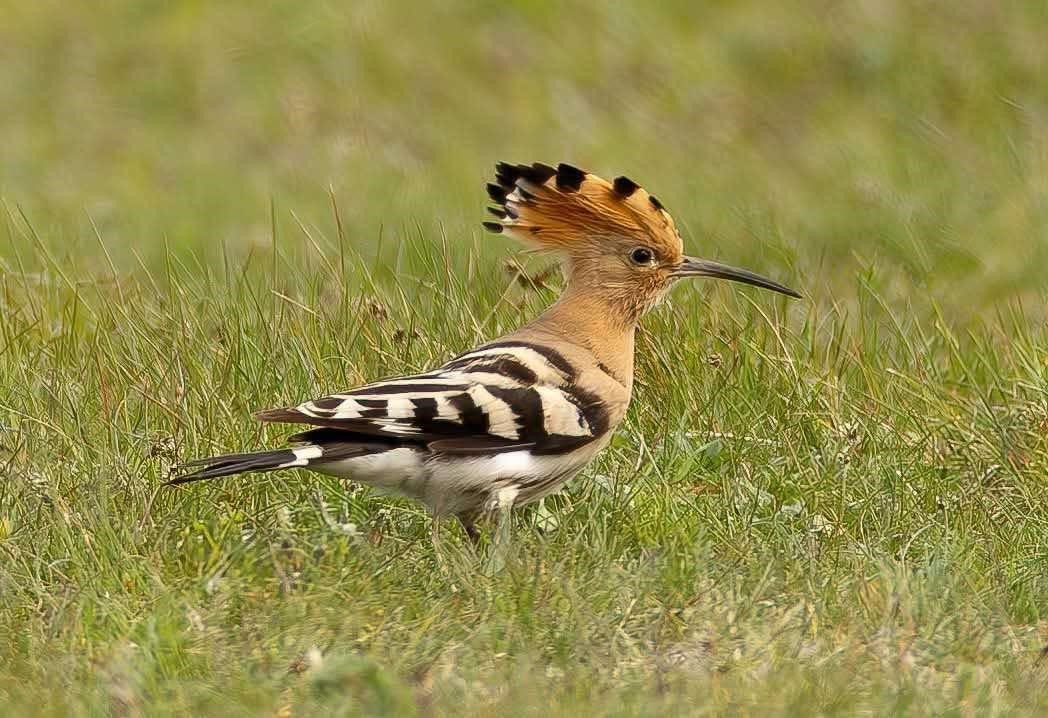Royal Bird Pays a Visit to Royal Dublin
Royal Bird Pays a Visit to Royal Dublin
By Chris Greely
Spring has finally come into its own this year with the recent rains giving some much-needed soakage to the course. In addition to the popping grass and blooming wildflowers comes the arrival of Irelands migratory birds such as Swallows, Swifts, House Martins, Wheatears, and various Warblers. Sometimes though the chaotic nature of weather patterns can carry the arrival of some unexpected visitors. One of these rare surprises was found on the 10th fairway last week for those lucky enough to spot it. The Eurasian Hoopoe (Upupa epops) is a colourfully distinctive bird found throughout Africa, Asia and parts of Western Europe, although it is quite a rare sight in Ireland and the UK. The reasons for arriving in Ireland is thought to be brought about by high pressure along with east-southeasterly winds which causes small numbers of the migratory populations to overshoot their mark, thus ending up scattered in random parts of the island, far from their intended location which would most likely have been France, Spain or Portugal. This year over 80 Hoopoes have been spotted across Ireland, most of which are in the south of the country. It is an even rarer occurrence for them to end up as far north as Dublin, which makes it a privilege to host a solo traveller at the Royal Dublin Golf Club.

First spotted by Mark Burke on the 10th fairway last Tuesday, our resident Hoopoe has caused quite a stir with local bird watchers on the island (the above photo courtesy of local photographer Mark Collins). With a pinkish-brown body, striking black and white wings, and a tall, erect crest of cinnamon-coloured feathers with black and white tips and a call that is an onomatopoeic reflection of its name, the Hoopoe is unlikely to be mistaken for any bird usually found on the island. They generally migrate to quiet areas with little disturbance which makes it easier to breed. When they do eventually hatch the parents will stay monogamous for a year in which time they will protect their young from predators. Their main form of defence is through the uropygial gland of the female which secretes a nasty smelling scent similar to rotting meat. This is rubbed on the plumage of the chicks which helps to deter predators until they are more capable of fending for themselves. The secretion is also thought to be an anti-parasitical and anti-bacterial agent. Their diet mostly consists of insects although they have been known to feed on reptiles, amphibians as well as plant matter. Although gracious in looks, the Hoopoe is not a bird to be messed with. Their long slender beaks used to stab, taking out an eye or even killing a competitor. They have also been known to be carnivorous with some of their young when food supplies are low.
Hoopoes also have a long-standing significance in ancient traditions, symbolism and superstitions. Some examples being - Hearing a singing Hoopoe before wine pressing is meant to foretell a good vintage. The earliest recordings of them are found in the Old Kingdoms of Egypt where they were depicted as sacred animals, carved into tombs and temples and associated with wisdom and loyalty. In some Persian mythology, the Hoopoe was said to hold the secrets of creation, presiding over the elections of future kings. Furthermore, they play a key part in the story of King Solomon in Islamic teachings, where it is mentioned in the Quran that it acts as a messenger and confidant to the king. Because of this the Hoopoe has become a symbol of kingship and royalty in many cultures. It is only fitting then that the Hoopoe would choose to make a visit to the Royal Dublin on its spontaneous sabbatical this year.
Chris Greely
Sustainability Coordinator
Wednesday 30th of April 2025


